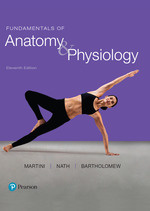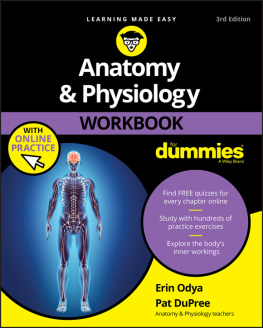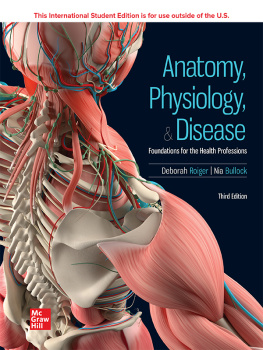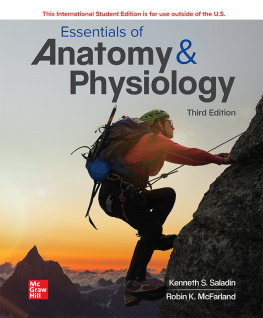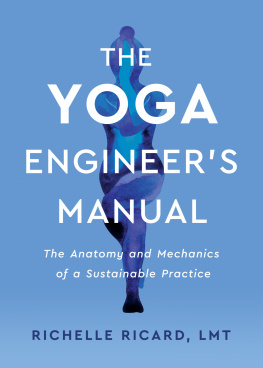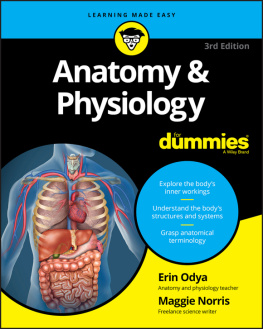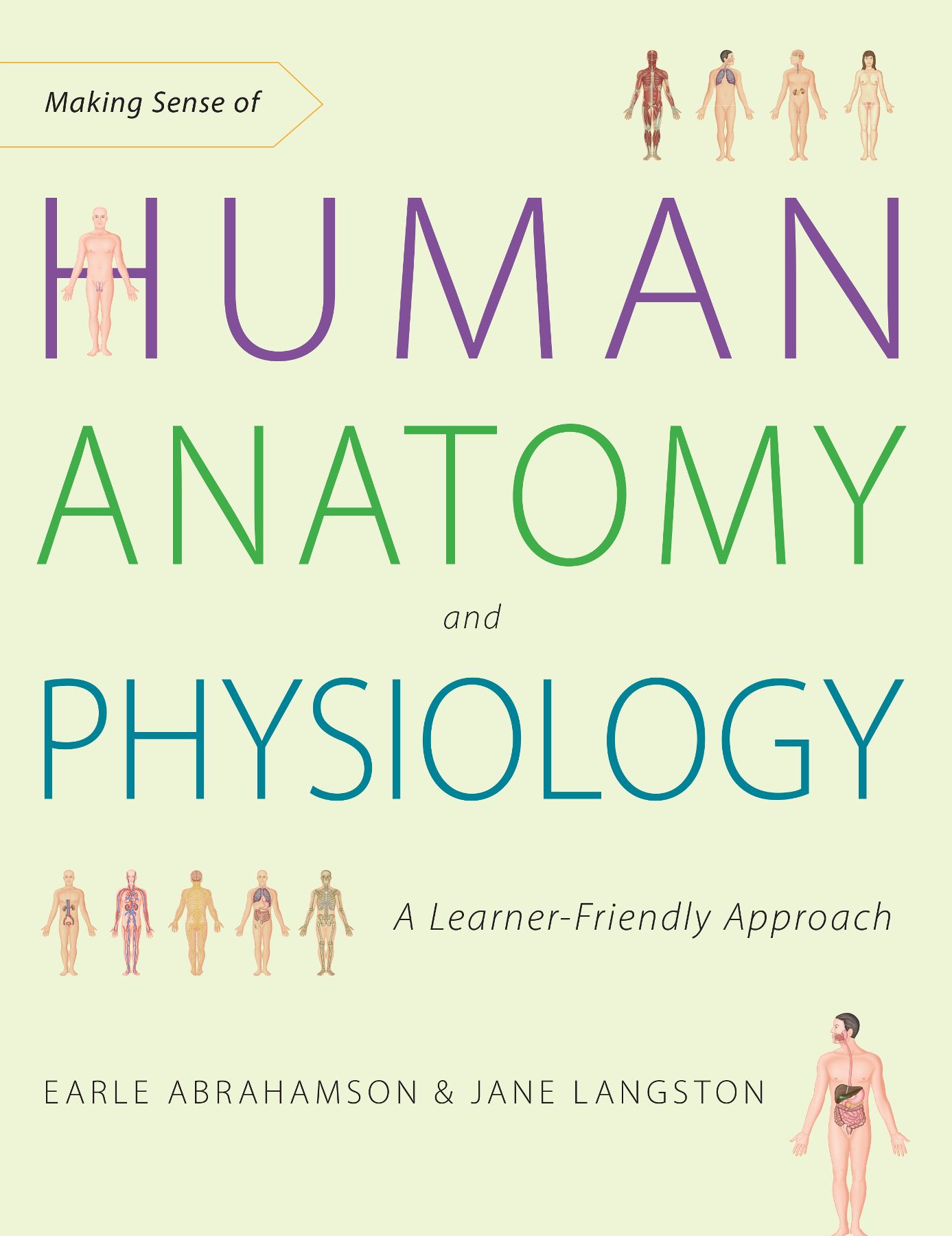
Making Sense of Human Anatomy and Physiology
Making Sense of Human Anatomy and Physiology
A Learner-Friendly Approach
Earle Abrahamson and Jane Langston

Chichester, England

North Atlantic Books
Berkeley, California
Copyright 2017 by Earle Abrahamson and Jane Langston. All rights reserved. No portion of this book, except for brief review, may be reproduced, stored in a retrieval system, or transmitted in any form or by any means electronic, mechanical, photocopying, recording, or otherwise without the written permission of the publisher. For information, contact Lotus Publishing.
First published in 2017 by
Lotus Publishing
Apple Tree Cottage, Inlands Road, Nutbourne, Chichester, PO18 8RJ
North Atlantic Books
Berkeley, California
Anatomical Drawings Amanda Williams
Photographs all taken by Jane and Mark Langston unless otherwise indicated
Cover Design Wendy Craig
Making Sense of Human Anatomy and Physiology: A Learner-Friendly Approach is sponsored and published by the Society for the Study of Native Arts and Sciences (dba North Atlantic Books), an educational nonprofit based in Berkeley, California, that collaborates with partners to develop cross-cultural perspectives, nurture holistic views of art, science, the humanities, and healing, and seed personal and global transformation by publishing work on the relationship of body, spirit, and nature.
North Atlantic Books publications are available through most bookstores. For further information, visit our website at www.northatlanticbooks.com or call 800-733-3000.
Disclaimer
Every effort has been made to include the most accurate and up-to-date information in this publication. However, the authors would be grateful for any errors to be brought to their attention. Neither the authors nor the publishers can take responsibility for misuse of this information or for injury caused by inappropriately applied treatment. Please consult a healthcare professional before applying any of the methods discussed in this text.
The publisher has made every effort to trace holders of copyright in original material and to seek permission for its use in Making Sense of Human Anatomy and Physiology. Should this have proved impossible, copyright holders are asked to contact the publisher so that suitable acknowledgment can be made at the first opportunity.
ISBN 978-1-62317-174-2 (e-book)
British Library Cataloguing-in-Publication Data
A CIP record for this book is available from the British Library
ISBN 978 1 905367 70 2 (Lotus Publishing)
ISBN 978 1 623171 73 5 (North Atlantic Books)
Library of Congress Cataloging-in-Publication Data
Names: Abrahamson, Earle, author. | Langston, Jane, author.
Title: Making sense of human anatomy and physiology : a learner-friendly approach / Earle Abrahamson and Jane Langston.
Description: Berkeley, California : North Atlantic Books, [2017]
Identifiers: LCCN 2016056329 (print) | LCCN 2017005251 (ebook) | ISBN 9781623171735 (paperback) | ISBN 9781623171742 (ebook)
Subjects: LCSH: Human physiology. | Human anatomy. | BISAC: MEDICAL / Anatomy. | SCIENCE / Life Sciences / Human Anatomy & Physiology. | HEALTH & FITNESS / Reference.
Classification: LCC QP34.5 .A25 2017 (print) | LCC QP34.5 (ebook) | DDC 612dc23
LC record available at https://lccn.loc.gov/2016056329
Contents
As I flew to London, I was nervous to present a new anatomy seminar, Immaculate Dissection (ID), to a group of eager physiotherapists, trainers, chiropractors and fitness enthusiasts. At ID, we had created a seminar that filled in gaps in anatomy education for movement professionals. Our students took a chance on a new method of anatomy instruction, with body painting, palpation and movement assessments. Sitting front-row center for our London premiere was Jane Langston, the co-author of Making Sense.
Throughout the course, Jane eagerly asked questions about the body paintings and lecture materials, and she was quick to volunteer for the corrective exercise portions. I naturally gravitated towards her to ask about her training. She informed me of her goals in helping improve education of anatomy in every discipline that studies it.
As Jane described this book you are about to read, I knew she had created a necessary game changer in the way anatomy is taught. This book is not just for the student but for the anatomy educator.
This topic hits home for me. As a gross anatomy instructor with five colleges, I see the foundational anatomy getting lost as students progress into becoming clinicians.
Something is missing in anatomy instruction.
Making Sense covers this ground, by combining several different learning methodologies into one concise program. Students are applying the anatomy not just memorizing where it is in space. Making Sense also closes learning gaps by providing multiple learning styles. This helps the educator and the student improve efficiency in the anatomy instruction.
If you are already studying anatomy and physiology, youll find Making Sense helps you to solidify your understanding with its innovative approach to learning.
If this is your first experience learning anatomy and physiology, you potentially will have much frustration saved by the use of Making Sense.
And if you are an anatomy instructor, you already know the importance of an anatomy text. Perhaps you have room to grow by using Making Sense as one of your primary references. This book closes the gaps between text and the carryover of anatomy into professional life.
Kathy Dooley, DC, MSc
Creator, Immaculate Dissection
Instructor, Albert Einstein College of Medicine
Rationale and Notes on How to Use the Text
Education is the kindling of a flame, not the filling of a vessel.
Socrates
The paradox There is more known, in every discipline, than students in any course can learn!
As a result, in most courses students are asked to learn too much, with the seemingly paradoxical result that too little is learned and retained.
If students cant learn it all, what should they learn? This text outlines the concepts of the big ideas. Big ideas are the key themes necessary to master the foundation knowledge. Through the compilation of learning methodologies, the text provides guidance on how to navigate difficult learning situations and learning barriers. This provides a revolutionary portal into the functional learning and application of anatomy from a learner-centred perspective.
Anatomy and physiology are a wonderful exploration and study of the human body that allow for an understanding of the processes of living and those that sustain life. There are multiple books and resources that explain the systematic approach to learning about the human body across levels of learning and learners. Few texts examine the core dynamics of learning and teaching anatomy and physiology.
This book engages the reader by presenting anatomy and physiology as a lived experience, one that requires understanding of terms and concepts. The book presents anatomy as a language and uses the principles of language learning to clarify meaning in anatomy and physiology study. In a learner-friendly approach, the chapters of the book take the reader through a journey of both studying and making sense of the content in anatomy and physiology. The book provides a road map for understanding problems and issues in studying the subject matter, provides useful insight into practical and effective assessment techniques, explores the subject matter from a learning-approach perspective, and considers different methods of teaching to understand how best to convey the message and meaning of anatomy and physiology. Like all books on teaching and learning, the emphasis of this text is on the quality process of delivering anatomy and physiology so that learners learn not only to pass an examination or assessment, but more importantly retain the fundamental building blocks of anatomical study and application. The final chapters provide useful resources that can be used to further explore concepts, assessment, learning activities and applications.
Next page

